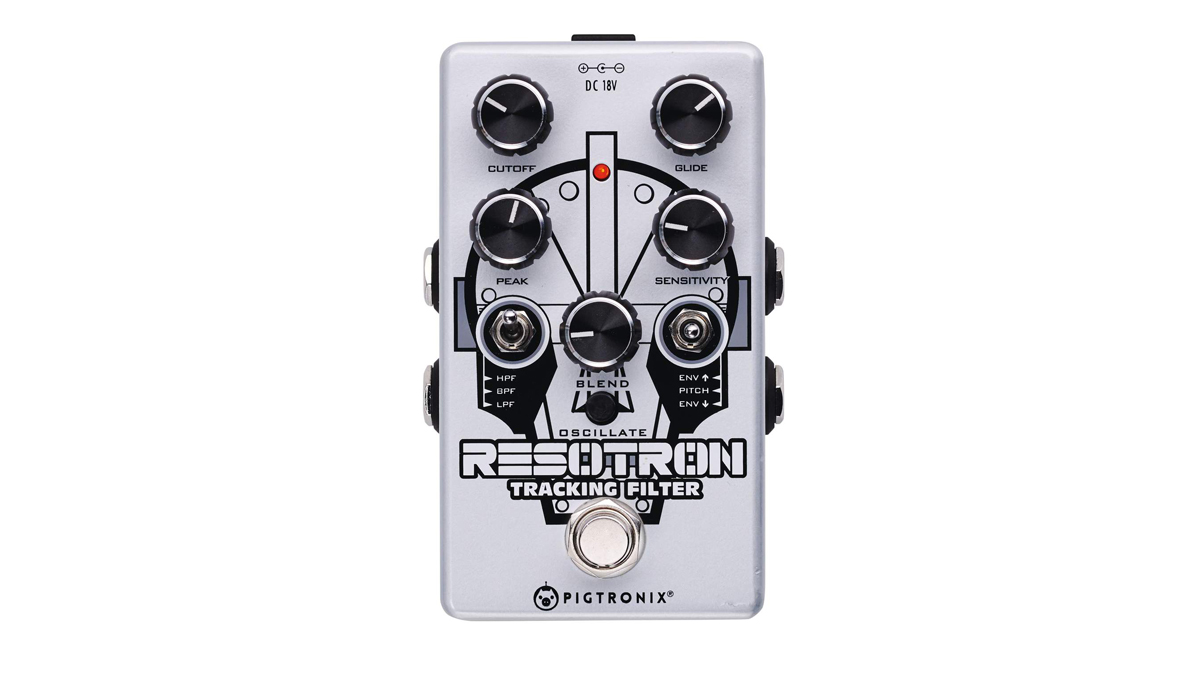MusicRadar Verdict
All the classic envelope filter sounds are here with plenty of nuanced variations, but there’s more for the bold to explore.
Pros
- +
Huge range of envelope filter sounds.
- +
Pitch mode and Oscillate button offer further sonic experiences.
- +
Compact size.
Cons
- -
18-volt operation could tie up two outputs on some power distributors.
MusicRadar's got your back
An envelope filter isn’t an immediate shoo-in for everybody’s pedalboard, but since they first appeared in the 1970s, plenty of players have embraced their auto-wah capabilities or their ability to mimic certain analogue synth tones, notably squelchy filter sweeps.
The traditional envelope filter pedal is based around dynamics: basically, the harder you play, the stronger the effect. This new all-analogue pedal is designed on the one hand to provide those traditional sounds with both up and down envelope modes, but also introduces the concept of a pitch-following filter with the effect based purely on the actual notes you play rather than how hard you play them.

The Resotron’s 24dB/oct filter circuitry is based on the SSM2040 chip as found on some vintage synths. It can be set to work as a low-pass or high-pass filter or in band-pass mode for typical wah tones. With adjustment to these voices with standard filter Peak and Cutoff knobs, there’s loads of sonic potential, response to your playing being set by the Sensitivity knob. You can dial in several subtle variations on the auto-wah experience for funky riffing, reggae rhythms and Jerry Garcia leads for the Deadheads among us, but you can also coax out some tones that you might expect from a phaser or flanger.
Plugging in an expression pedal allows foot control of the filter cutoff if you’d like a more conventional wah experience, and the problem of an envelope filter’s sound receding into the mix when the pedal is engaged is countered here by onboard compression, mixed in with the Blend control, which keeps things punchy and present without affecting sensitivity.
Pitch mode offers something else again. Its Glide knob sets how long it takes for the filter to move between notes, higher settings with some languid swelling-in of the effect being particularly nice. Needless to say, there’s loads of control juxtaposition to explore if you want to get a bit ‘out there’. And if you want to get really wacky or just head further away from conventional guitar, engaging the Oscillate switch conjures up a shedload of monophonic synth sounds.
Want all the hottest music and gear news, reviews, deals, features and more, direct to your inbox? Sign up here.
Trevor Curwen has played guitar for several decades – he's also mimed it on the UK's Top of the Pops. Much of his working life, though, has been spent behind the mixing desk, during which time he has built up a solid collection of the guitars, amps and pedals needed to cover just about any studio session. He writes pedal reviews for Guitarist and has contributed to Total Guitar, MusicRadar and Future Music among others.

